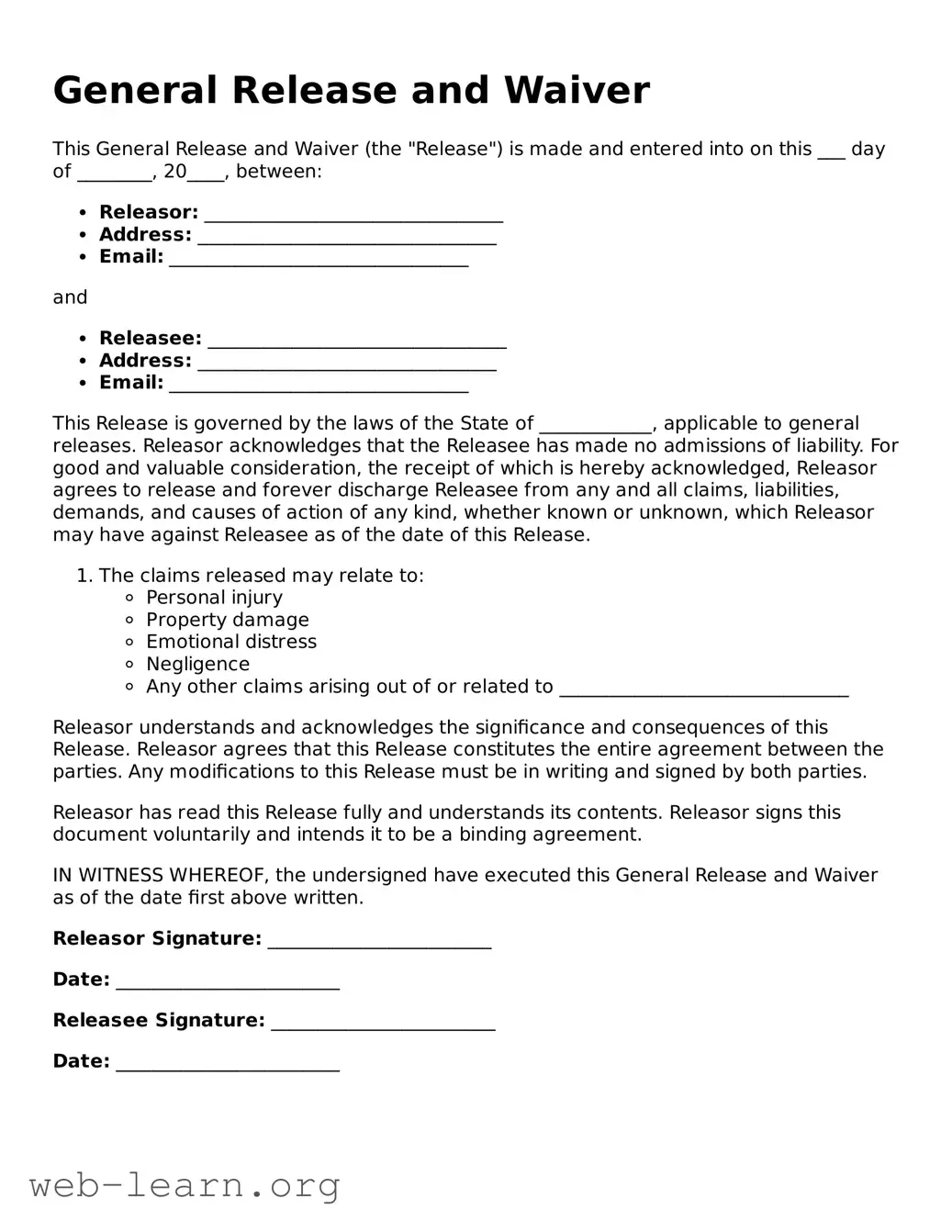Release of Liability Agreement
This Release of Liability Agreement (the "Agreement") is entered into as of the ___ day of ___________, 20__, by and between:
Releasor: ________________________________________
Address: ________________________________________
City, State, Zip Code: ___________________________
and
Releasee: ________________________________________
Address: ________________________________________
City, State, Zip Code: ___________________________
This Agreement is governed by the laws of the state of [State Name], and acknowledges that the Releasor agrees to release the Releasee from any and all liabilities associated with the activity described below:
Description of Activity: ________________________________________
________________________________________________________
In consideration of the opportunity to participate in this activity, the Releasor hereby agrees as follows:
- The Releasor voluntarily assumes all risks related to the activity.
- The Releasor waives any claim against the Releasee for injuries or damages that may occur.
- This release covers all claims, known or unknown, that may arise from participation in this activity.
The Releasor understands that this Agreement is binding and that they are giving up certain rights. The Releasor confirms they are at least 18 years old and have the authority to enter into this Agreement.
Signature of Releasor: _______________________________
Date: ________________
For minors, the parent or guardian must sign:
Parent/Guardian Name: ________________________________
Signature: ________________________________________
Date: ________________
This document represents the entire agreement between the parties and supersedes any prior agreements. No modifications shall be valid unless in writing and signed by both parties.
By signing below, the Releasor acknowledges that they have read and understood this Release of Liability Agreement.
